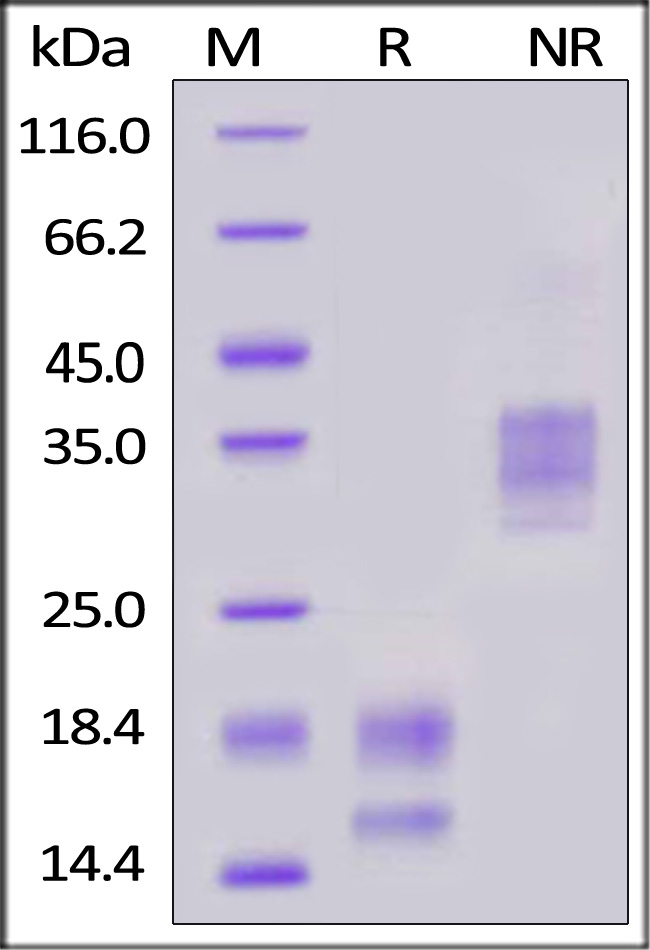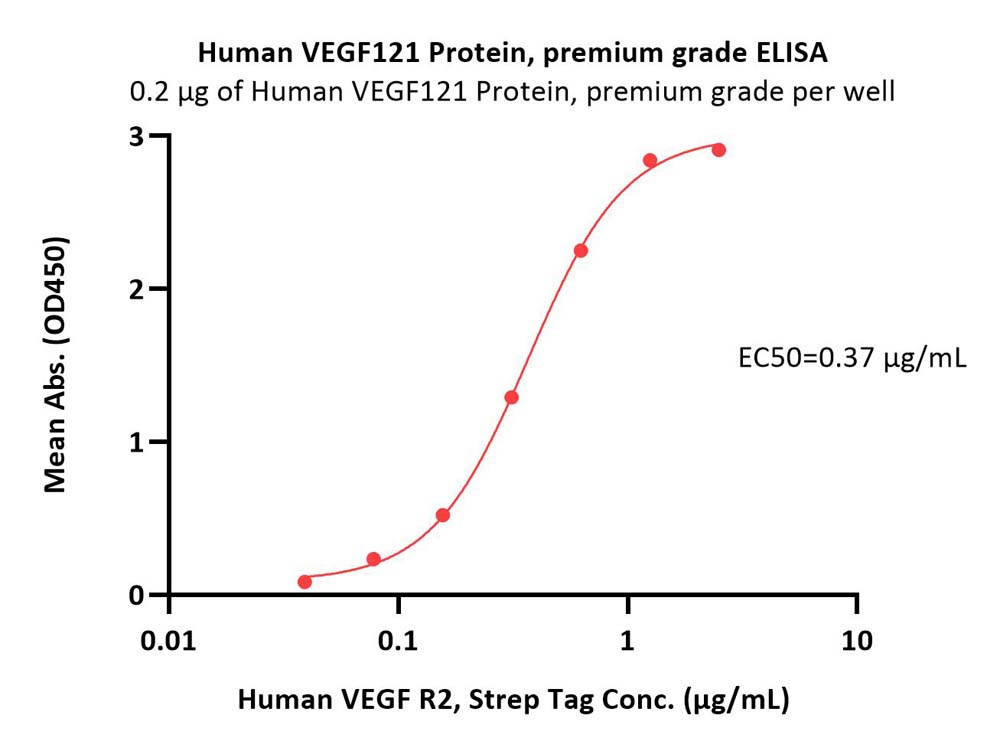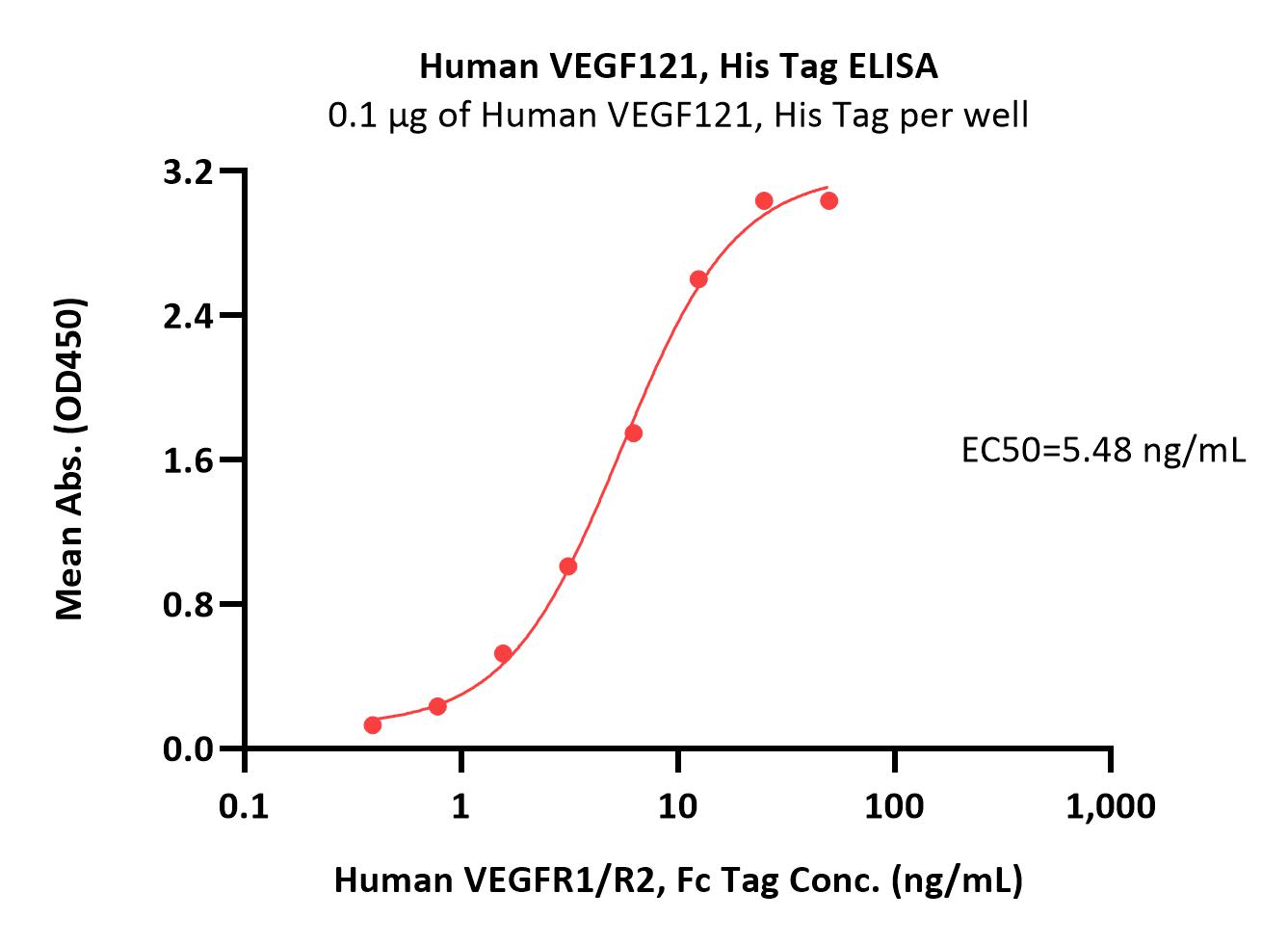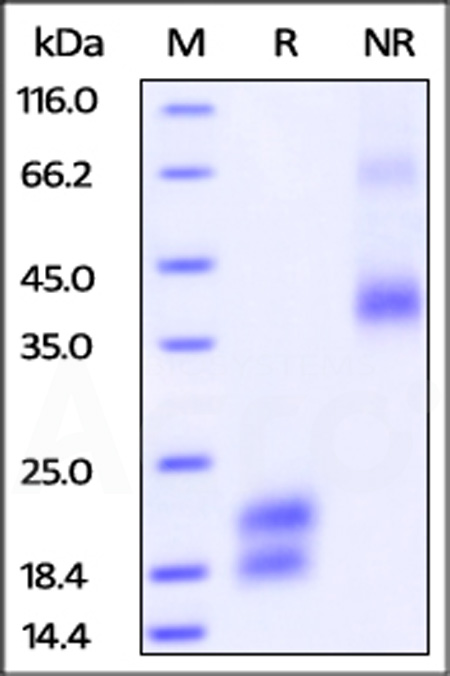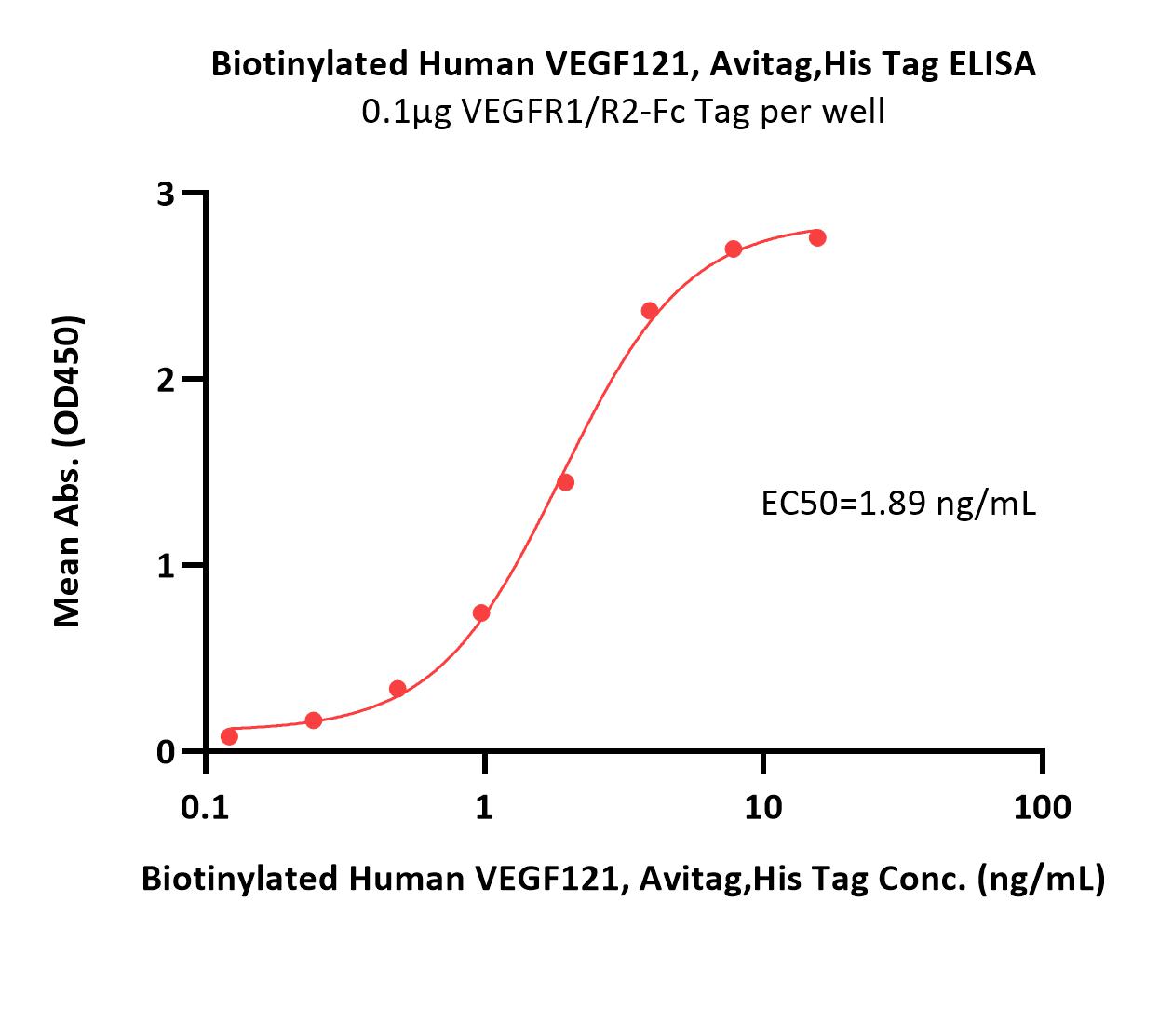VEGF121分子别名
RP1-261G23.1,MGC70609,MVCD1,VEGFA,VPF
VEGF121分子背景
Vascular endothelial growth factor (VEGF) is also known as vascular permeability factor (VPF) and VEGF-A, and is a member of the platelet-derived growth factor (PDGF)/vascular endothelial growth factor (VEGF) family and encodes a protein that is often found as a disulfide linked homodimer. This protein is a glycosylated mitogen that specifically acts on endothelial cells and has various effects, including mediating increased vascular permeability, inducing angiogenesis, vasculogenesis and endothelial cell growth, promoting cell migration, and inhibiting apoptosis. Alternatively spliced transcript variants, encoding either freely secreted or cell-associated isoforms, have been characterized. Alternatively spliced isoforms of 121,145,165,183,189 and 206 amino acids in length are expressed in humans. VEGF165 appears to be the most abundant and potent isoform, followed by VEGF121 and VEGF189. VEGF121 is the only form that lacks a basic heparinbinding region and is freely diffusible. Mouse embryos expressing only the corresponding isoform (VEGF120) do not survive to term, and show defects in skeletogenesis. Human VEGF121 shares 87% aa sequence identity with corresponding regions of mouse and rat, 93% with feline, equine and bovine, and 91%, 95% and 96% with ovine, canine and porcine VEGF, respectively. VEGF121 induces the proliferation of lymphatic endothelial cells. The lymphangiogenesis may be promoted by upregulation of VEGF121, which may in turn act in part via induction of VEGF-C.






















 Star Ribbon预染蛋白Marker蛋白质标记物是生物研究和药物开发的重要组成部分。无论是用于蛋白质电泳还是western blot,我们的预染色蛋白质标记物帮助您快速确定目标蛋白质的分子量或评估转移效率。Fc受体蛋白治疗性抗体的功效取决于Fab片段及其对目标抗原的结合活性,还取决于Fc片段及其与关键Fc受体的相互作用。因此,在抗体工程中候选物必须针对一系列受体进行测试。探索我们的重组Fc受体蛋白质的全面收藏!
Star Ribbon预染蛋白Marker蛋白质标记物是生物研究和药物开发的重要组成部分。无论是用于蛋白质电泳还是western blot,我们的预染色蛋白质标记物帮助您快速确定目标蛋白质的分子量或评估转移效率。Fc受体蛋白治疗性抗体的功效取决于Fab片段及其对目标抗原的结合活性,还取决于Fc片段及其与关键Fc受体的相互作用。因此,在抗体工程中候选物必须针对一系列受体进行测试。探索我们的重组Fc受体蛋白质的全面收藏!































 膜杰作
膜杰作 Star Staining
Star Staining









